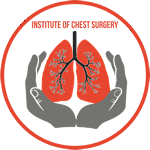Aspergilloma, commonly known as a “fungus ball,” is a fascinating yet potentially serious condition that forms in the lungs. It is a type of pulmonary mycetoma caused by the colonization of the lungs by the fungus Aspergillus. While most people can inhale Aspergillus spores without harm, certain individuals are at risk of developing aspergilloma due to specific underlying factors. In this comprehensive article, we will delve into the intriguing world of aspergilloma and explore the various causes that contribute to its formation in the lungs.
Understanding Aspergilloma
Before we delve into the causes, let’s briefly understand what aspergilloma is. Aspergilloma is a condition where the fungus Aspergillus forms a mass within a pre-existing lung cavity or an area of lung tissue damaged by a prior lung condition. The mass appears as a ball of intertwined fungal elements, mucus, and cellular debris. Aspergilloma can be found in various cavities within the lungs, such as lung bullae, cavities resulting from tuberculosis, or damaged lung tissue due to previous lung infections.
1. Predisposing Lung Conditions
The primary risk factor for aspergilloma formation is the presence of pre-existing lung conditions that create an environment conducive to fungal growth. Certain lung conditions predispose individuals to Aspergillus colonization, leading to the formation of aspergilloma. Some of these predisposing lung conditions include:
a) Cystic Fibrosis (CF)
Cystic fibrosis is a genetic disorder that affects the respiratory and digestive systems. The thick, sticky mucus produced in CF can accumulate in the airways and obstruct proper lung function, providing an ideal environment for Aspergillus spores to settle and grow.
b) Bronchiectasis
Bronchiectasis is a chronic condition characterized by the permanent widening and scarring of the airways, leading to the pooling of mucus. This stagnant mucus can harbor Aspergillus spores, which may lead to the formation of aspergilloma.
c) Chronic Obstructive Pulmonary Disease (COPD)
Individuals with COPD have damaged airways and weakened lung defenses, making them more susceptible to respiratory infections and fungal colonization. The altered lung environment in COPD can facilitate the growth of Aspergillus fungus.
d) Tuberculosis (TB)
Patients with a history of tuberculosis may develop cavities or hollow spaces in the lungs due to the destruction of lung tissue by the Mycobacterium tuberculosis bacterium. These cavities can become a breeding ground for Aspergillus, promoting the formation of aspergilloma.
2. Immunocompromised State
A weakened immune system significantly increases the risk of aspergilloma development. Individuals with compromised immunity, such as those with HIV/AIDS, organ transplant recipients, or those undergoing chemotherapy, are more susceptible to Aspergillus colonization in the lungs. In these cases, the immune system’s inability to effectively combat the fungal spores allows the fungus to thrive and form aspergilloma.
3. Environmental Exposure
Aspergillus spores are ubiquitous in the environment and are commonly found in soil, decaying vegetation, and compost. People who are frequently exposed to environments with high Aspergillus spore concentrations, such as agricultural workers, gardeners, or those working in construction and demolition, have an increased risk of inhaling the spores. Prolonged and repeated exposure to Aspergillus spores heightens the likelihood of fungal colonization in the lungs and the formation of aspergilloma.
4. Lung Damage and Scarring
Any form of lung damage or scarring can create spaces or cavities within the lung tissue. These spaces provide an ideal environment for Aspergillus spores to settle and grow, eventually forming aspergilloma. Lung damage can result from various factors, such as previous infections, injury, or surgical procedures.
5. Pre-existing Lung Cavities
Individuals with pre-existing lung cavities, irrespective of the cause, are at a higher risk of developing aspergilloma. Cavities provide the necessary space for Aspergillus to accumulate and form the characteristic fungus ball.
6. Inhalation of Large Aspergillus Spore Loads
In some cases, individuals may inhale a large load of Aspergillus spores at once. This massive exposure can overwhelm the lungs’ natural defense mechanisms, allowing the spores to establish themselves and eventually form aspergilloma.
Conclusion
Aspergilloma formation in the lungs is a complex interplay of various factors. Predisposing lung conditions, immunocompromised states, environmental exposure, lung damage, and pre-existing lung cavities all contribute to the development of this fascinating yet potentially serious condition. Early detection and management are crucial in preventing complications associated with aspergilloma.
If you suspect you have any of the predisposing factors or experience symptoms such as coughing up blood, chest pain, or difficulty breathing, seek immediate medical attention. A qualified healthcare professional can perform diagnostic tests and provide appropriate treatment to manage aspergilloma effectively.
Remember, the information provided here is for educational purposes only and should not be considered a substitute for professional medical advice. Always consult a healthcare expert for accurate evaluation and personalized guidance regarding your health condition.







